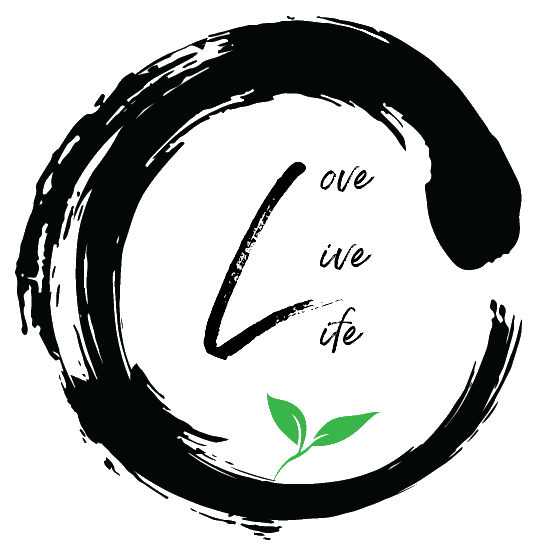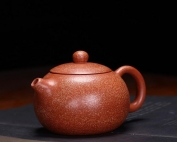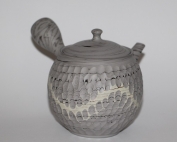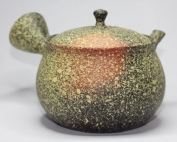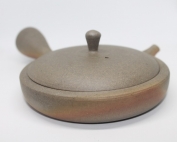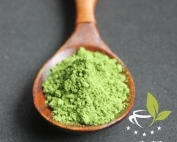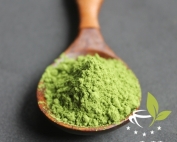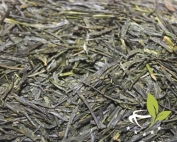Camellia sinensis – tea plant
The Camellia sinensis
The tea plant bears the Latin name Camellia sinensis and belongs botanically to the genus of camellias. It occurs in nature in the tropics and subtropics and thrives best in humid areas of the earth.
Wild tea plants are evergreen shrubs or trees and their stature height can be from about 1 meter to nearly 20 meters. The leaves are small and round, dark green and slightly lighter at the bottom, slightly hairy in some species.
They grow alternately on the thin branches. The flowers appear from October to February are small, white, with many stamens. The small capsule fruits are flattened and carry one to two roundish brown seeds.
Spread of the tea plant
 The botanists distinguish from the Camellia sinensis four different varieties. The Camellia sinensis var. Sinensis is native to the highlands of southern China. It grows as a shrub at altitudes up to 2500 meters.
The botanists distinguish from the Camellia sinensis four different varieties. The Camellia sinensis var. Sinensis is native to the highlands of southern China. It grows as a shrub at altitudes up to 2500 meters.
This species is now widely cultivated. The Camellia sinensis var. Assamica grows in the plain and in the marshland, is tree-like and can grow up to 18 meters high. Their leaves are relatively large and hairy at the bottom. The Camellia sinensis var. Dehungensis has even larger leaves than the var. Assamica and is distributed in the south of the Chinese province of Yunnan. The Camellia sinensis var. Pubilimba occurs wild, especially in southeastern China.
The two first named varieties of the tea plant have been cultivated for millennia and from the leaves but also stems and buds is the so popular and healthy tea. Even today, the tea is grown on a large scale where it was probably originally grown, in the “Middle Kingdom”. But China is no longer the largest tea exporter. Most of the tea drunk in Europe today comes from India and from the island of Ceylon (Sri Lanka). But Bangladesh, Indonesia and Taiwan are also important tea growing areas. What maybe not every tea drinker knows, tea is grown today in Africa.
Especially near the equator in Kenya, Cameroon, Tanzania, Mozambique and Zimbabwe is growing in the highlands very good tea. In the Caucasus region, on the Turkish Black Sea coast, in Iran, in Australia and in some South American countries, there are now tea cultivation areas. However, for some tea lovers, the green tea grown in Japan is the preferred beverage, and the country also exports almost exclusively green tea.
Black tea or green tea? The varieties of the world
Especially famous is Darjeeling tea. The homonymous cultivation area lies in the north of India in the border area to Nepal and Tibet on steep slopes up to 2000 meters height. The special climatic conditions of the region let an excellent sparkling and full-bodied tea ripen.
Also Assam tea has many lovers in the world. The Assam growing area is located in northeastern India on the border with Bangladesh on the left and right of the mighty Brahmaputra River. Assam tea is very spicy and strong and is often refined with cream or milk. Ceylon tea from Sri Lanka is tangy and tastes easy of citrus flavors, it tastes of both black tea and green tea. In Japan and China, the most sought-after green teas of international trade are produced. For example, in Japan, the matcha tea has become very popular in Europe.
Tea harvest.
The tea harvest is very complex and the processing of the tea is a rather complicated process. When harvested depends on the species and in which regions the tea plants grow. Depending on whether black tea, green tea or a semi-fermented tea (oolong) is produced, the processing takes different lengths. For green tea, the picked tea leaves are traditionally withered in iron pans over fire and dried.
In industrial production this happens in large containers. Green tea is not fermented. White tea is processed just like green tea, but here tea leaves are harvested with silver-white colored undersides of the leaves and additionally young shoots. Only top tea plants produce white tea. The semi-fermented or oolong tea is shaken after the harvest in wicker baskets and the exiting juice reacts with the oxygen in the air.
The fermentation begins, but is then stopped by heating in iron pans. If you do not stop the fermentation of the tea leaves and let them completely oxidize before they are dried, then black tea is produced. In addition, there are so-called shadow or half-shade teas in Japan. They are shaded some time before the harvest and deliver a special green tea – the Matcha, Kabusecha or Gyokuro.
Use of the tea
Tea is not only a very tasty drink but also known as a remedy. In addition to the invigorating and encouraging tea, it also contains vitamin B, potassium manganese and fluoride. Tea strengthens the immune system and has an anti-inflammatory effect. In addition, it prevents tooth decay and can stop diarrhea at appropriate draw time but also stimulate digestion.
Globally recognized researchers even believe that regular consumption of tea is even good for heart attacks, strokes and dementia. Here, the green tea, Oolong and Matcha even has a special role. In addition to health benefits, tea is also a drink that is suitable and used for solemn ceremonies and whose enjoyment many tea lovers celebrate in all parts of the world really beautiful. So drinking tea is also very communicative and sociable.
Green Tea History:
In its millennia-old history as a medicinal plant, the green tea reaches to Japan only relatively late. The first documented import of the plant to Japan dates back to around the beginning of the ninth century AD. Here are the sources but not completely clear. It is clear, however, that the scholars of Buddhism recognized the usefulness of the plant for the training of the mind relatively early.
So it is conceivable that the knowledge of the precious medicinal plant was passed on from Buddhist teachers from China to their traveling students from different areas of the Far East world. Trade relations with Europe at that time were not particularly pronounced, which should also remain so until around the time of Marco Polo. Thus, the spread of green tea through trade relations and knowledge sharing was initially limited to those closer neighbors of China where the threshold between cultures was relatively low.
After the green tea had thus found its way to Japan, he established relatively quickly next to Buddhist monasteries as a drink for the upper class. According to sources, this development can largely be attributed to the Emperor Saga, who was the ruler of the country had the necessary power and financial resources to shape the culture of Japan for the centuries that have continued to this day.
This was the green tea of Buddhist monks presented as periods of their homage. After enjoying the tea, the emperor was so convinced of its positive effect that from then on he established it as a drink in Japan. In the beginning, however, the green tea was so valuable that it was consumed only by the highest layer. However, because of his caffeine content, he was also continued to grow in the Buddhist monasteries of Japan, where he assisted the monks and their students in the training of their minds. At that time, the green tea was obtained as a drink either directly from the leaves of the plant or from pressed pieces of dried leaves, the so-called tea cake.
Japanese green tea: influences from China
After the time of the Emperor Sagas, the further history of green tea in Japan continues to be largely influenced by the changeable relationship with the Chinese rulers. Only much later did the tea powder Macha develop after the European era between the 10th and 13th centuries AD. This was probably also adopted by Japanese travelers from China.
This powder was and is obtained directly from the leaves of the plant, using traditional green tea of the variety Tencha. Also in the future, such reciprocal relations between the two realms should play an important role in the development of green tea in Japan. There was a wealth of craft knowledge and customs around the cultivation, the preparation and the enjoyment of the medicinal plant and the beverage derived from it. Also part of this culture are the Samurai green tea events, which brought it as a drink to many of those present at these events.
In this way, the green tea creeping its way into the bourgeois social strata. This is mainly due to the fact that these events have become increasingly popular as social happenings. Nonetheless, ordinary citizens were often denied access or were not interested in the samurai events. Later, in collaboration with Buddhist monks, these Japanese nobles then developed the first real plantations where Japanese green tea was grown in large quantities.
So it came to the fact that many Europeans initially bizarre-seeming facts that many samurai families traditionally cultivated green tea.
Japanese green tea: The slow way through the social classes
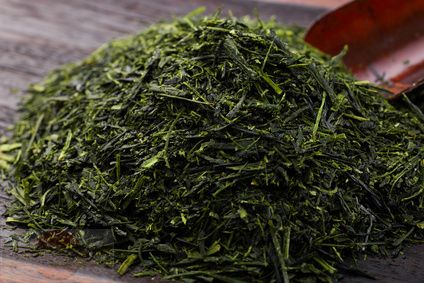 It was not until the 15th century AD that Japanese green tea was officially included in ceremonies. In this way, he was able to further expand his social significance and became more and more familiar to the people who participated in these ceremonies.
It was not until the 15th century AD that Japanese green tea was officially included in ceremonies. In this way, he was able to further expand his social significance and became more and more familiar to the people who participated in these ceremonies.
However, the ceremonial participants were still more Japanese from the upper classes. Many historians are of the opinion that the development of tea ceremonies played a significant role an increasing the popularity of green tea in the more bourgeois classes of Japan. Although this process was to continue for centuries, it was essential for the cultural significance of the plant. After completing this process, green tea was no longer a mere privilege of certain strata of society, but a cultural bond that ran through all strata and linked the people of Japan.
However, in the hundred years following the development of tea ceremonies, the social importance of the plant increased enormously. This was helped in particular by the much later discovery of the Gyokuro variety, which was to be decisive for the eventual geographical spread of green tea across the entire Japanese island.
The growing popularity of green tea is ultimately due to the development of many different teas. It was discovered that the taste of the tea can be significantly influenced by the growth conditions of the plants. Biochemically, this is due to the fact that, for example, a lower rate of photosynthesis influences the totality of the ingredients contained in the plant. This ultimately leads to shady tea plants having a different taste than tea plants grown under normal light.
This eventually led to the development of Tencha tea in the 16th century. Due to the further exchange with the Chinese tea culture they went back to the fact, because of the improved durability compared to the powder, the green tea directly from the leaves aufzubrühen.
This later led to the so-called Uji method, in which the tea leaves are steamed and rolled up. The sencha tea rolled up in this way was able to continue the triumphal procession that was still far from complete during the eighteenth century AD. Especially in the higher middle classes the Sencha became more and more popular.
Green tea around the world
At the beginning of the 17th century began an export of Japanese green tea and the rest of the world. Particularly important here were the opening of numerous large Japanese ports in the mid-19th century, with which the tea could be shipped in large quantities. In particular, in this way, the foundation for tea exports to Europe and the United States of America could be laid.
A major turning point was the further opening of Japan for international trade by the so-called Meiji revolution around the year 1868.
Thus, the Japanese green tea was ultimately able to convince people of its positive effects not only in all Japanese social classes, but throughout the world.
Green tea production
For the production of an outstanding green tea a lot of experience and tact are necessary. The multi-step manufacturing process turns the fresh leaf into a fine Sencha or Gyokuro. The freshly picked leaves are only the precursor of a good green. This raw tea is very rarely sold to the end customer. Of course, the harvest of the tea takes place predominantly by machine, but will continue to be picked by hand.
Especially for very high quality Gyokuros or Senchas or due to the small size of the tea field, the tea harvest is preferred by hand. Unlike mechanical harvesting, in which 4-5 open leaves are harvested, the tea picker manually selects only 2-3 freshest opened leaves for harvesting. To avoid a loss of quality, the freshly harvested and still raw leaves are fanned with moist air.
This process prevents moisture loss of the tea leaf. Leaving the tea leaf in this state would immediately initiate the oxidation process and fermentation caused by the enzymes present in the leaf. To prevent this oxidation, the tea leaves are steamed with non-pressurized water vapor. This process is crucial to the taste, aroma and color of the tea. The damping is carried out at a temperature of about 100 ° C.
After steaming the tea to maintain its flavor and color, cool air is added to quickly adjust the tea to room temperature. Subsequently, during the first rolling stage, the sheet is pressed using hot air. Rolling removes moisture, increasing the drying process, improving luster, color, taste and aroma. Then the first roll of leaves takes place. In this case, hot, dry air is also supplied for further drying.
Now begins the second rolling process, the moisture of the leaves is still relatively high at this moment. The size and shape of the leaf is also still very uneven at this time. The sheet is further processed with hot air for the duration of this operation and prepared for finish rolling. At the end of the finish or finish rolling, a tea leaf with a moisture content of about 10-13% is obtained. Through a special drying process with hot air, now the actual and final drying process begins. The moisture is reduced by another 5%, which ensures long-term storage of the aromas.
The tea still has an uneven shape, and the moisture content is still high. As a result, a secondary processing is required before the tea can get into their pot as a finished product. Further processing includes processes such as drying, sorting, cutting and forming. The blending of the tea (blending) takes place only at this time. And is elaborately carried out according to regional preferences or price. At the end of this processing, the green tea is created as we know and love it in form and color.
All of these specific methods and procedures are immensely complex, labor intensive, and dependent on the location at which they can be performed.
Green tea preparation
The preparation of Japanese green tea is as diverse as its different types, Gyokuro, Sencha or Matcha itself. The factors of preparation vary, for example, according to local customs, times of day, personal taste or the green tea variety.
We would like to explain a little bit how they can manage to prepare a tasty and delicious green tea. The primary focus is on the Sencha and Gyokuro varieties. In our preparation overview at the end of the text, you will of course also find tips for the varieties Bancha or Kukicha.
Basically, we prepare our gyokuro in the traditional Japanese way as described in detail by the World Tea Association or also on the Schweikart Green Tea page. However, we are also fans of a Uji method, which we met during the last trip to Japan. To the Uji method later more.
Decisive elements of the preparation of green tea are above all, the choice of the right water and its temperature and the type of pot used for the preparation. For the water is basically, it should be soft, with little calcium, magnesium or other minerals used. Water-osmosis systems are the best choice in our opinion. Entry-level models of these osmosis systems are already available from about 60 €.
The water temperature plays an important role in the preparation of the tea for the taste and the aroma. The numerous teas require, due to their different flavors or other components, a preparation with different water temperatures. The astringent ingredients such as catechins need about 80 ° C to dissolve out of the tea leaf, while for amino acids such as theanine only a temperature of 50 ° C is needed.
Also, a health effect of the various green tea varieties, depends on the appropriate preparation temperature. This is also the reason, if you prefer a non-astringent Sencha, to let it grow at 70 ° C. If your preference is for the astringent Sencha, the temperature of the water should be 80 ° C. When Gyokuro, the taste by low temperatures, slowly release.
For the preparation of a good tea, a variety of utensils, such as those used in Japan, are available. Here is a brief introduction to the most common Japanese utensils.
The Kyusu (teapot)
The most important utensil for the preparation of Japanese green tea. Choosing the right pot for a particular type of tea can significantly improve the taste and aroma. Generally, no matter what kind of tea you prepare, preapples the pot of hot water. Next applies; “The higher the quality of the tea, the smaller the pot”! Tea masters use only pitchers with ceramic sieve for a softer and more intense taste.
Yuzamashi (cooling vessel)
The Yuzamashi is a very useful accessory to prepare the ideal green tea. It has been specially designed to allow boiling or hot water to cool quickly to the desired temperature. If you want to cool the water cooler or faster, put it first in the tea bowl and then in the yuzamashi.
About the thumb you can say, water cools per vessel in which it is spent by about 10 ° C from.
Tea bowls (Chawan)
Similar to the kyusu, the use of different tea cups can improve the taste. Again, the higher the quality of the tea, the smaller the tea cup. Bright insides of the shell are mostly preferred. Here the tea drinker can enjoy the juicy rich colors of the tea.
Tea spoon (Chasaji)
This gives them the opportunity to dose the appropriate amount of tea leaves. 1 Chasaji is usually 4g of tea. These tea cream spoons can be made of wood, bamboo or metal.
Tea caddy (Chazutsu)
It is important to keep the green tea away from contact with moisture or oxygen as much as possible. Therefore, the storage of the tea in a good tea caddles is recommended. Good Japanese tea caddles have an outer and inner lid to ensure proper airtightness. High-quality tea caddies are available in cherry wood, tinned steel or combined in both materials.
Since heat is always necessary for taste, the results of up to information! That the higher the quality of the tea, the lower the water temperature.
Green Tea Health:
For many millennia, people have known and appreciated green tea. It was relatively quickly recognized in the Far Eastern healing arts, for example, that he belongs to one of the most potent medicinal plants.
Green tea is one of the strongest antioxidants. This means that green tea neutralizes the dangerous free radicals found in the body.
Also in the reduction of many other pollutants supports the green tea and has a strong detoxifying effect. In addition, the blood cholesterol level is significantly reduced and the fat metabolism is improved.
The accelerated by the green tea fat burning experience, according to many people slimming easier if in addition to sports or diet and green tea is consumed. The qualities of endurance and performance that are so important for all sports and also at work are also increased.
Even at work or in other leisure activities can benefit from it. Incidentally, green tea also improves insulin sensitivity. This significantly reduces the risk of type 2 diabetes. But also in the prevention of various cancers and atherosclerosis, he can help. In addition, the risk of serious cardiovascular disease is significantly reduced.
Many harmful to humans microbes and microorganisms makes the green tea through its natural ingredients life difficult. In many cases, green tea can prevent inflammation and other diseases caused by bacteria and viruses. Because of its ingredients, it is also antiviral, antibacterial and antimycotic, so it also helps prevent fungal diseases. Even on the often aggressive tumors associated with cancer, green tea has a beneficial effect on humans.
Because here he helps to prevent the nutrient supply to the tumors and thus to inhibit their further growth. In this way, these tumors can then spread in relation to unrestrained growth only relatively difficult in the body. Also, the green tea reduces blood pressure and thus antihypertensive. This is especially interesting for people who are constantly struggling with high blood pressure.
Due to its antibacterial effect, the green tea already has positive effects when it is consumed. For example, it combats the microorganisms that cause tooth decay in the oral cavity. The prerequisite is, of course, that it contains only the least possible sugar, because the sugar promotes the proliferation of these microorganisms. In particular, even after an infusion, the leaves can be consumed in order to achieve the most effective effect possible here.
He also supports the organism during digestion. In particular, it neutralizes acids occurring through its de-acidifying ingredients in food and beverages. So it is awarded a basic effect.
How does the medicinal plant unfold its healing effect?
In addition, research has shown some very interesting findings. Thus, the catechins contained in the plant is attributed a particularly important role for the resulting beneficial effect. But even the amino acids contained in the tea, such as L-theanine, seem to occupy a key place here. Similarly, the presence of flavonols plays an important role in inhibiting a chemical oxidation reaction that is believed to play a major role in the development of atherosclerosis.
However, one must not overlook the fact that the age-old role of green tea as a potent medicinal plant can not be reduced to individual ingredients. Rather, it can be assumed that the active ingredients contained in green tea can only fully develop their positive effect on the organism through their interaction. Even though scientists today are better able to understand many biochemical correlations and to interpret the individual components in their effects, one must not underestimate the complexity of the interaction of these active substances.
Thus, the various ingredients such as catechins, flavonols, caffeine, theogalline, theobromine, quinic acid, theanine and chlorophyll must always be considered in their joint interaction. The same applies of course to the carotenoids and minerals. The caffeine contained in the green tea stimulates the concentration and efficiency, but its absorption and action is significantly improved by L-theanine. In addition to the theanine, many other amino acids such as glutamic acid, aspartic acid, arginine and lysine are included in the plant.
In addition, many vitamins such as vitamin A (beta-carotene), B1, B2, niacin (B3), C, E and K help the body function and promote good health at the right dose. Unlike in many vitamin supplements or other foods purchased in the supermarket, these are present in green tea in a particularly bioavailable form. In addition, the plant contains about 40 (depending on the species) of the 50 essential and very rare trace elements in a highly tolerated and bioavailable way for the organism. Just a sufficient supply of such trace elements is in the long term for the health of the human body particularly important.
Is green tea the same as green tea?
Of course, the term “green tea” is, strictly speaking, just a collective term that sums up various plants that occur naturally. The different types of green tea are quite different in the composition of their ingredients and thus in their effect on the human organism.
Depending on the desired effect, it may therefore be useful to combine different types of green tea with each other. In this way, with proper dosage, an optimal concentration within the scope of the possibilities can be achieved and thus an optimal interaction of the various health-promoting active ingredients are sought. An important aspect here is that a professional preparation of the various teas is necessary to be able to use the full positive effect of the different plants.
A selected combination of different types of green tea thus optimally uses the corresponding potential for health promotion , Likewise, it is of course crucial for the ingredients available in the leaves, how the green tea was grown and under what conditions the plants are grown. Here is to pay attention to a certain quality standard. This is necessary so that the enjoyment of the green tea can develop its full, beneficial and beneficial effect on the organism.
For example, the leaves should be harvested relatively fresh and grown in a suitable climate for use as a medicinal herb before being processed further. Also, of course, not all plants of the family of green tea are equally suitable as a medicinal plant. Here there are often small but subtle differences, but should be paid to an optimal development of the health-promoting effect.
Green tea is the most commonly consumed beverage due to it is healthy, sensory, stimulating and relaxing.
The Japanese tea ceremony with its affinity to Zen Buddhism can also serve to calm down, to throw off the hustle and bustle of stressful everyday life and to recharge your batteries. Also, the preparation and enjoyment of your Japanese green tea, can lead to greater inner balance, you can leave the stress of the day behind, recharge your batteries and achieve more harmony.
Above all, green tea from Japan depends on the right preparation, as well as the right accessories, such as the side handle jug Kyusu or the water cooling jar Yuzamashi. A traditional Japanese kyusu is always made of clay and is specially designed to make green tea. They are incredibly beautiful, practical and the use of the natural-mineral clay makes for an even finer and more harmonious taste.
The choice of the optimum brewing time also plays a crucial role, so that, for example, after 7 minutes of brewing time, all ingredients of the tea have been released into the water. The dosage and the appropriate selection of tea variety such as Gyokuro, Sencha or Bancha should be chosen according to your caffeine tolerance.
Varieties such as Bancha and Kukicha have a very low, Sencha a medium and Gyokuro and Matcha a high caffeine content. Although the caffeine in green tea has a different effect than in coffee (nervousness, sweating or noticeably increased heartbeat usually stay away), however, side effects such as falling asleep are possible. Your fresh infused green tea should be drunk within about 10 minutes.
Otherwise, a disintegration of high quality ingredients is possible. Green tea from Japan is rich in mineral ingredients, containing numerous antioxidants and valuable essential oils.
On our website we would like to introduce the diverse world of Japanese green tea. Get an overview of the cultivation, harvest and proper use of each type of tea from Japan. We support tea farmers, tea gardens and tea traders who work in harmony with Mother Nature, practice their craft using traditional methods, pass on and stand for unmistakable Japanese green teas.
Conclusion
The green tea is still up to date as a millennia-old medicinal plant from the Far East. Through the diversity and interplay of the various ingredients, the plant has the potential to promote health in just as many ways, to neutralize various pollutants and prevent disease.
